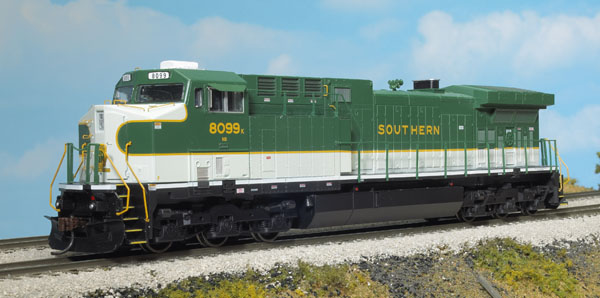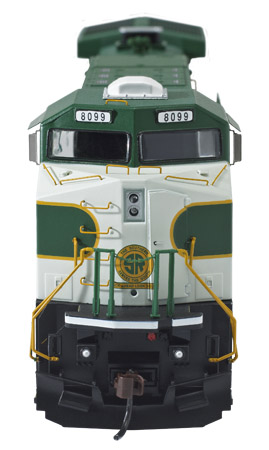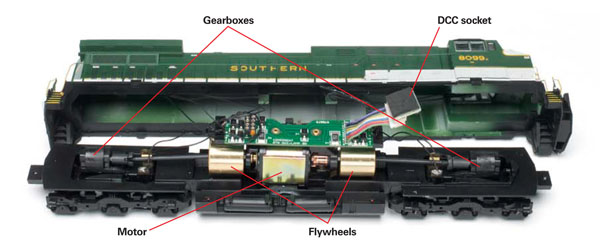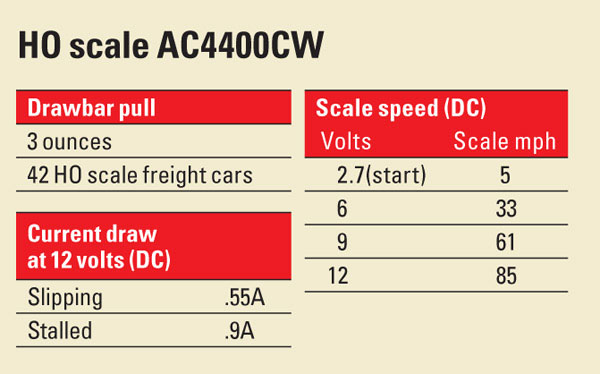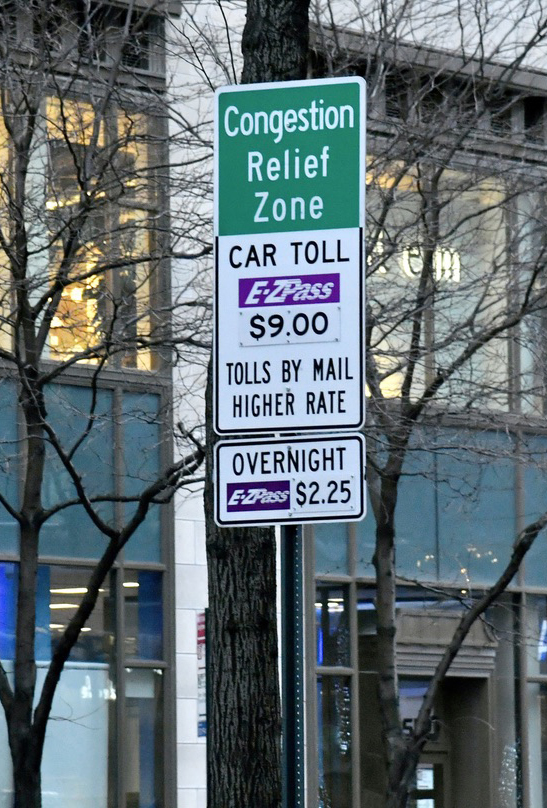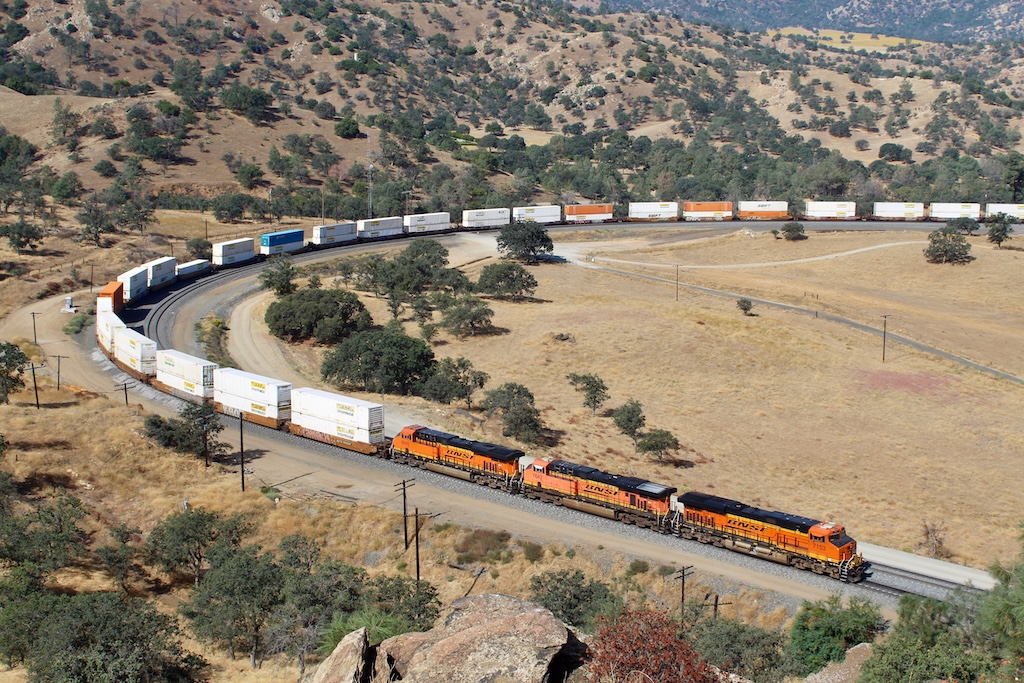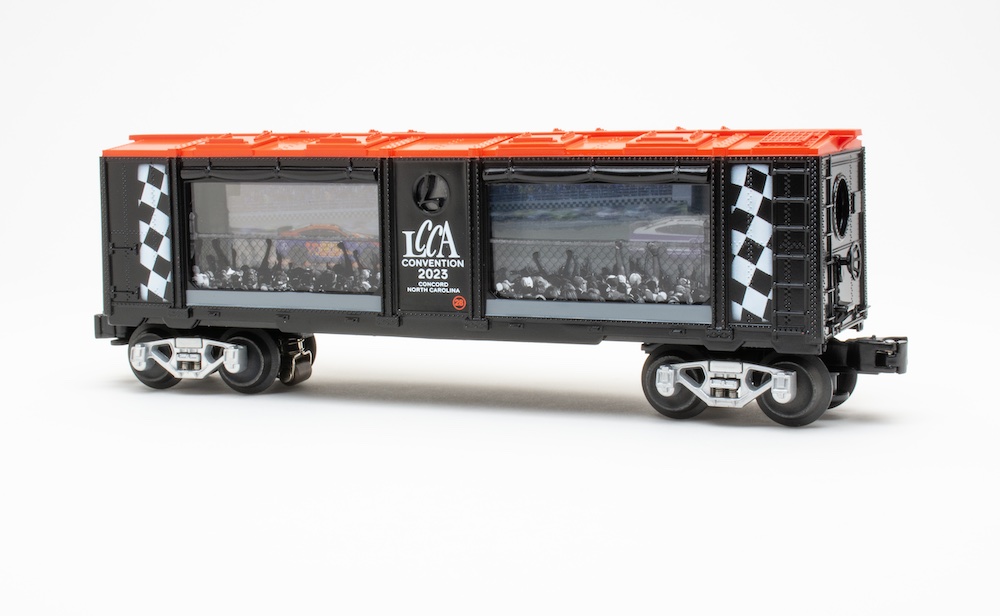The prototype. General Electric built more than 2,500 AC4400CW diesel-electric locomotives between 1993 and 2004. The AC4400CW looks similar to a GE Dash9-44CW, except that it has alternating current (AC) traction motors instead of the direct-current (DC) traction motors found on the Dash 9. AC traction motors offer better adhesion and require less maintenance than DC traction motors.
Because of strict emissions laws that came into effect in the United States beginning in 2005, GE replaced the AC4400CW in its product line with the more environmentally friendly ES44AC. At the same time EMD introduced its new SD70ACe.
In 2012 Norfolk Southern celebrated its 30th anniversary by painting 20 new locomotives, 10 GE ES44ACs and 10 EMD SD70ACes, in updated liveries of its predecessor railroads.
Separate detail parts include the three-chime horn, cab sun shades, and brake wheel. The front pilot includes a snow plow. The handrails and grab irons are made of acetal plastic to resist breaking. The trucks feature separately applied brake cylinders. The model didn’t include m.u. hoses or uncoupling levers. For modelers who wish to add those details, parts are available from Cannon & Co., Cal-Scale, and other firms.
Our review sample is decorated with the paint scheme applied to the prototype ES44AC Southern Ry. no. 8099. There’s sharp separation between the Dulux Gold, white, and green paint. All striping and lettering is straight and opaque. Tiny warning stencils are clearly legible under magnification, including the six stencils on the dynamic brake grid covers that read caution remove clamping bolts near grid blowers before removing grids.
A printed-circuit board that controls lighting is attached to the top of the motor. Converting the model to Digital Command Control is a simple matter of installing an 8- or 9-pin DCC decoder into the DCC socket.
The headlights came on and the locomotive started moving at 2.7 volts. Microbulbs provide the headlights with a realistic yellowish glow. The headlights operate automatically according to the model’s direction. The model has ditch lights, but they are non-functioning, painted parts.
The Athearn locomotive negotiated an 18″ radius curve with no problems. However, with its long wheelbase, the AC4400CW looks better on 22″ or greater radius curves. The model’s all-wheel pickup helped it roll smoothly through no. 6 turnouts. The headlight shone steadily without flickering.
I appreciate that Athearn was up front about this Ready to Roll model not being the correct prototype for the NS heritage fleet. Even if it isn’t prototypical, the AC4400CW looks great in Southern green and white.





